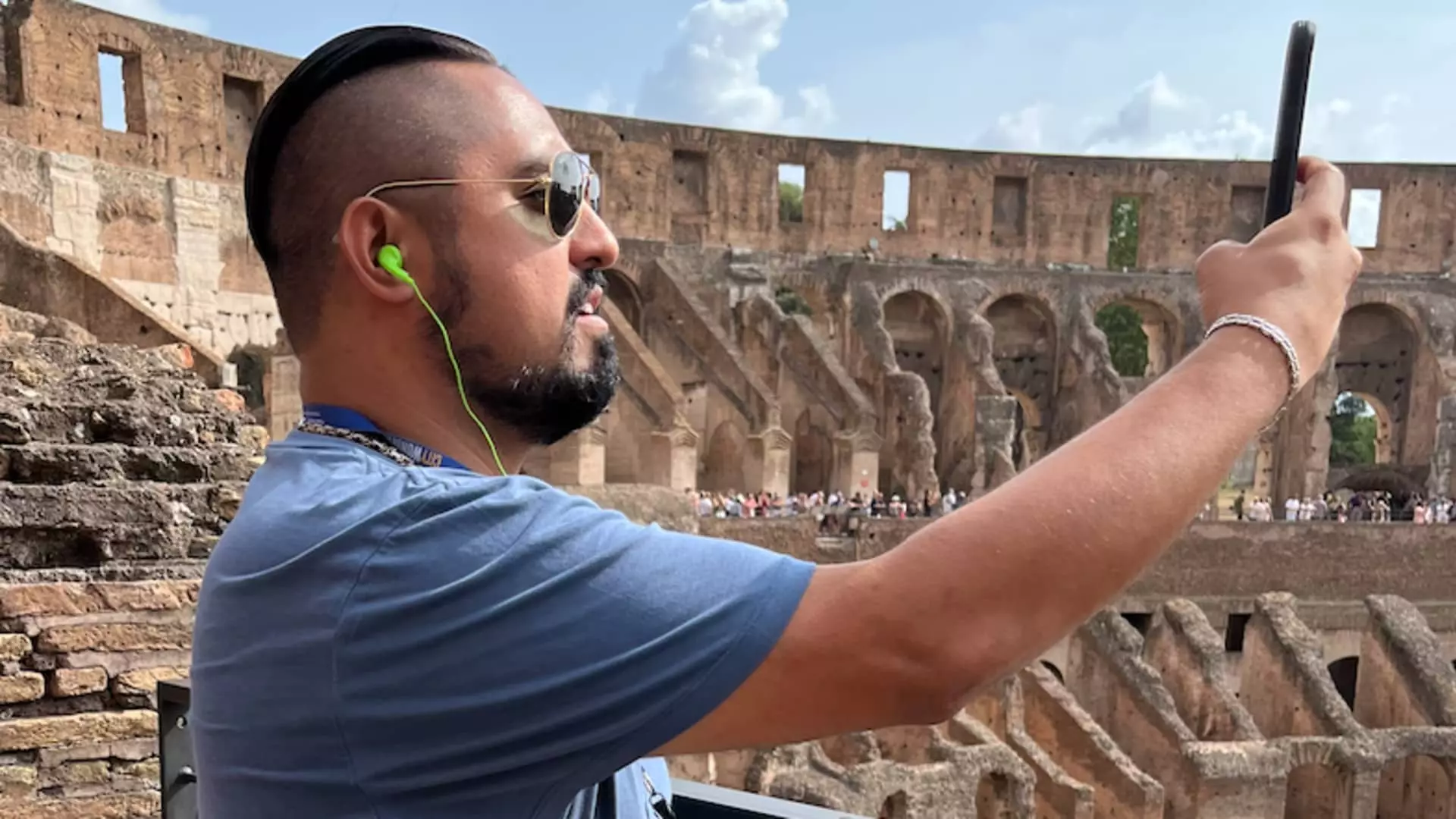When my mom and I found ourselves basking in the relentless Roman sun, waiting for our audio tour of the Pantheon, little did I know that technology would add a unique twist to our adventure. Armed with curiosity and the fascinating algorithms of ChatGPT, I decided to engage in a digital tête-à-tête while we passed the time. My initial inquiry received a factual, albeit dry, overview of the Pantheon. This didn’t quite match the grandeur of the site or our anticipation. I refined my approach, asking ChatGPT to embody the character of a captivating tour guide. The resulting narrative transported us to the age of gods and emperors, illuminating the majesty of one of Rome’s most esteemed architectural wonders.
As we celebrated my mom’s 60th birthday on a magnificent seven-city journey, ChatGPT swiftly morphed into our digital companion. I had previously dubbed it “Chef” to inject a bit of humor into our dialogue, which proved to be an inspired choice. ChatGPT’s response unfolded like an enchanting story, crafting a vivid exploration of the Pantheon and the historical figures connected to it. This interactive approach to learning not only personalized our experience but also enriched our understanding of Roman history.
While summer 2023 witnessed incredible advancements in artificial intelligence—with AI startups amassing $111 billion in funding and a surge in new applications—the challenge remains for everyday users to decipher and maximize the potential of tools like ChatGPT. In spite of the tech whirlwind around us, using ChatGPT felt remarkably intuitive, as it helped refine a simple visit into a profound learning experience. Whether it was picking a movie for the night or drafting a mock contract, my explorations into the capabilities of this AI had always been fruitful. But nothing compared to its prowess as an impromptu tour guide as we roamed through Italy.
As we embarked upon our prestigious visit to the Pantheon, ChatGPT’s insights enthralled me. The tour guide echoed a salient reminder: “Look up at that magnificent dome!” It wasn’t just any dome; this was the largest unreinforced concrete dome on Earth, standing tall for nearly two millennia. I found myself captivated not just by the structure’s architectural brilliance but also by how ChatGPT’s narration breathed life into the historical significance that surrounded us.
It transformed our experience from an ordinary sightseeing venture into an engaging narrative steeped in mythology, artistry, and history. ChatGPT also provided context throughout our journey, elaborating on significant landmarks such as the Trevi Fountain and even addressing why certain monuments remained upheld in present-day Rome—such as the controversial tribute to Mussolini in Stadio Olimpico, which serves as a reminder of history’s complexities.
Despite the impressive depth of knowledge offered by my digital companion, we frequently employed human guides to share their unique perspectives and enrich our experiences. In Vatican City, our guide, Amy, showcased her expertise by deftly navigating security lines and illuminating gems within the Vatican’s treasure trove of art. There was a certain satisfaction in knowing she could engage physically with artifacts and stories in ways that technology simply could not replicate—such as spinning the enormous Sfera con Sfera.
Our human-guided excursions took us through remarkable sites, from the poignant spot where Julius Caesar was cremated to the idyllic vineyards of Tuscany. Each guide had a distinct voice, a wealth of knowledge, and personal anecdotes that humanized the grand narratives of history. Infusing warmth and humor into their presentations, these guides elevated our experiences beyond the realm of static information.
Throughout our journey, the potential of AI became clear as we navigated hidden gems, often uncovering historical insights through the lens of ChatGPT. For instance, when we ventured into Santa Maria sopra Minerva, a lesser-known Gothic church just minutes from the Pantheon, ChatGPT unveiled its treasures, crafting a narrative that married the ancient with the sacred in Rome.
Among the church’s masterpieces, a notable statue of Christ the Redeemer stood—an artwork born from the same hands that sculpted the celebrated ceilings of the Sistine Chapel. Here, amidst the quiet reverence of history, I felt fortunate to share this moment with my mother and our digital companion, as we admired the grandeur without the crowds.
In an age where AI continues to redefine our interactions with the world around us, my Roman adventure offered a unique blend of tradition and modernity, showcasing the boundless potential for technology to enhance our experiences. As we roamed ancient streets enriched by both human and artificial insights, I realized that while technology can assist us, it is the balance of human connection and historical context that truly brings these experiences to life.

